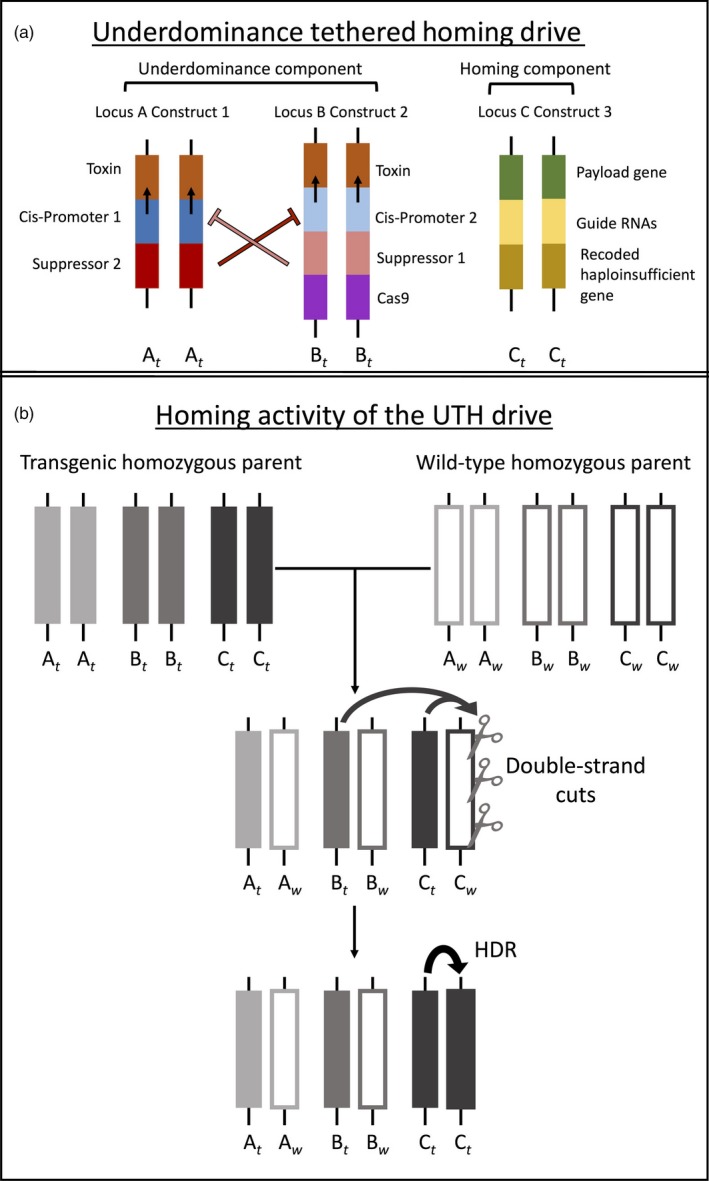Figure 1.

The general design and mechanism of the underdominance tethered homing (UTH) drive are shown. Different genetic elements that form a construct are shown as colored segments. (a) The three constructs of the UTH drive occupy three unlinked loci. The two underdominance constructs form a toxin‐suppressor engineered underdominance system. The third construct forms a homing component that is driven in the presence of the other two constructs. (b) In the germline of heterozygous individuals, the Cas endonuclease from the underdominance component along with the guide RNAs targets the wild‐type counterpart of the homing construct for multiple cuts. Repair through the cell's homology‐directed repair (HDR) pathway leads to insertion of the homing construct into the homologous chromosome, rendering the cell homozygous for the homing construct
